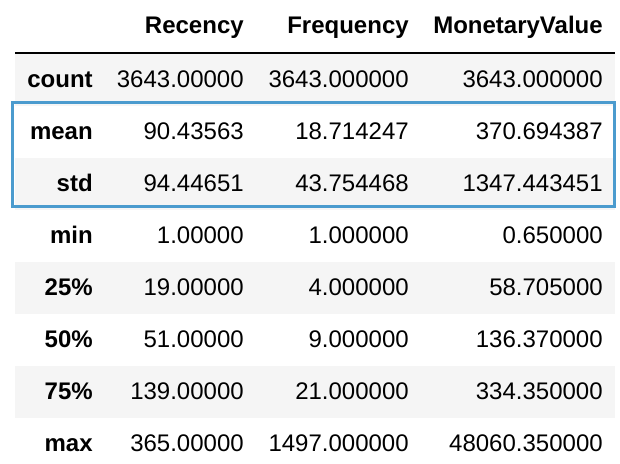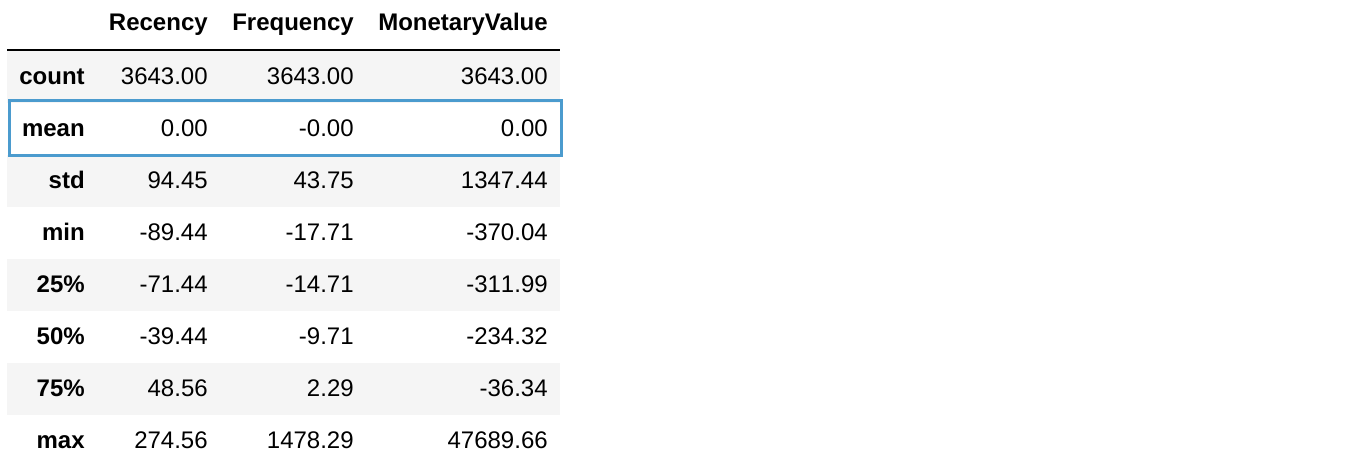Centering and scaling variables
Customer Segmentation in Python

Karolis Urbonas
Head of Data Science, Amazon
Identifying an issue
- Analyze key statistics of the dataset
- Compare mean and standard deviation
datamart_rfm.describe()

Centering variables with different means
- K-means works well on variables with the same mean
- Centering variables is done by subtracting average value from each observation
datamart_centered = datamart_rfm - datamart_rfm.mean()
datamart_centered.describe().round(2)

Scaling variables with different variance
- K-means works better on variables with the same variance / standard deviation
- Scaling variables is done by dividing them by standard deviation of each
datamart_scaled = datamart_rfm / datamart_rfm.std()
datamart_scaled.describe().round(2)

Combining centering and scaling
- Subtract mean and divide by standard deviation manually
- Or use a scaler from
scikit-learnlibrary (returnsnumpy.ndarrayobject)
from sklearn.preprocessing import StandardScaler scaler = StandardScaler() scaler.fit(datamart_rfm) datamart_normalized = scaler.transform(datamart_rfm)print('mean: ', datamart_normalized.mean(axis=0).round(2)) print('std: ', datamart_normalized.std(axis=0).round(2))
mean: [-0. -0. 0.]
std: [1. 1. 1.]
Test different approaches by yourself!
Customer Segmentation in Python

